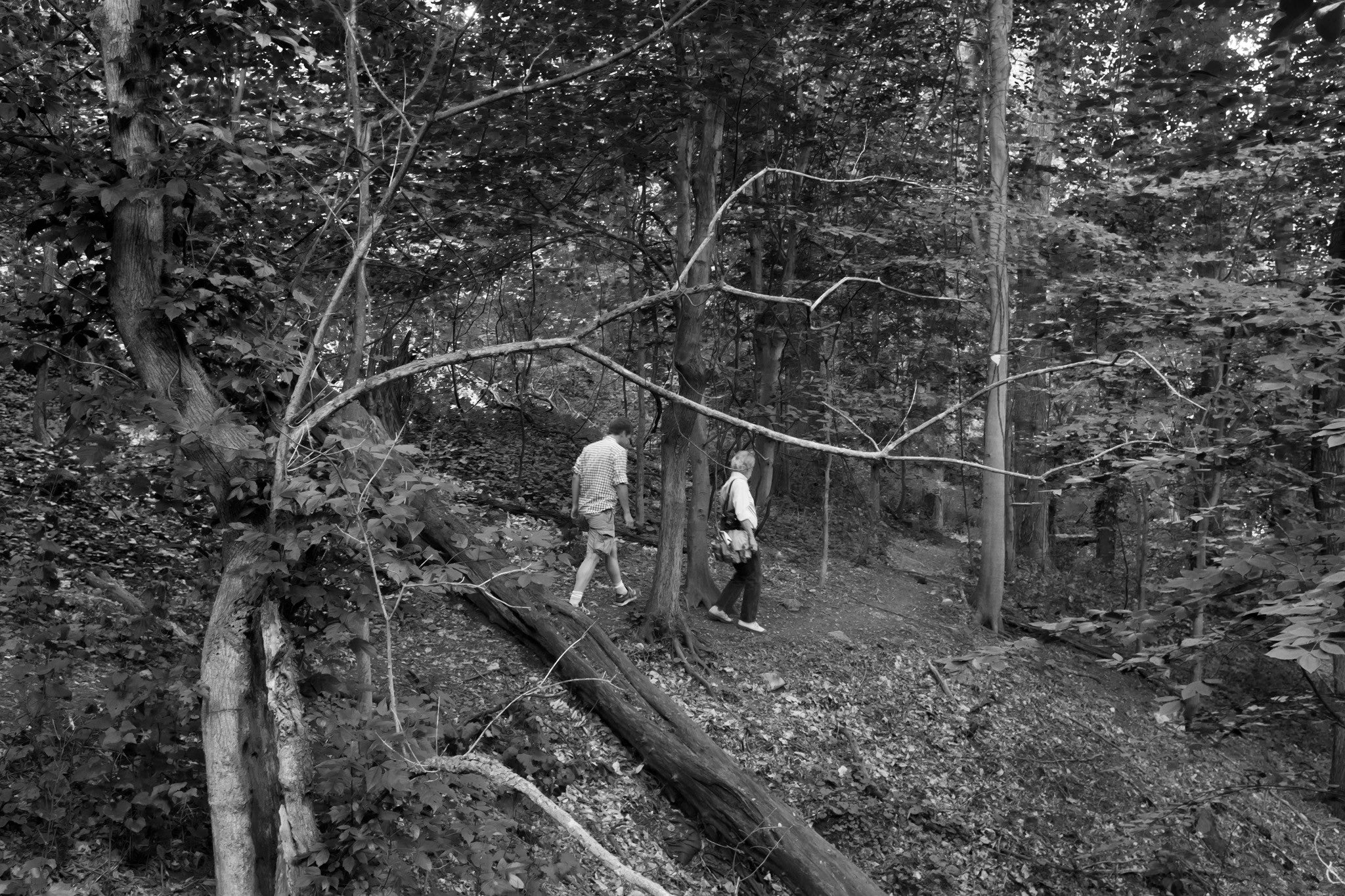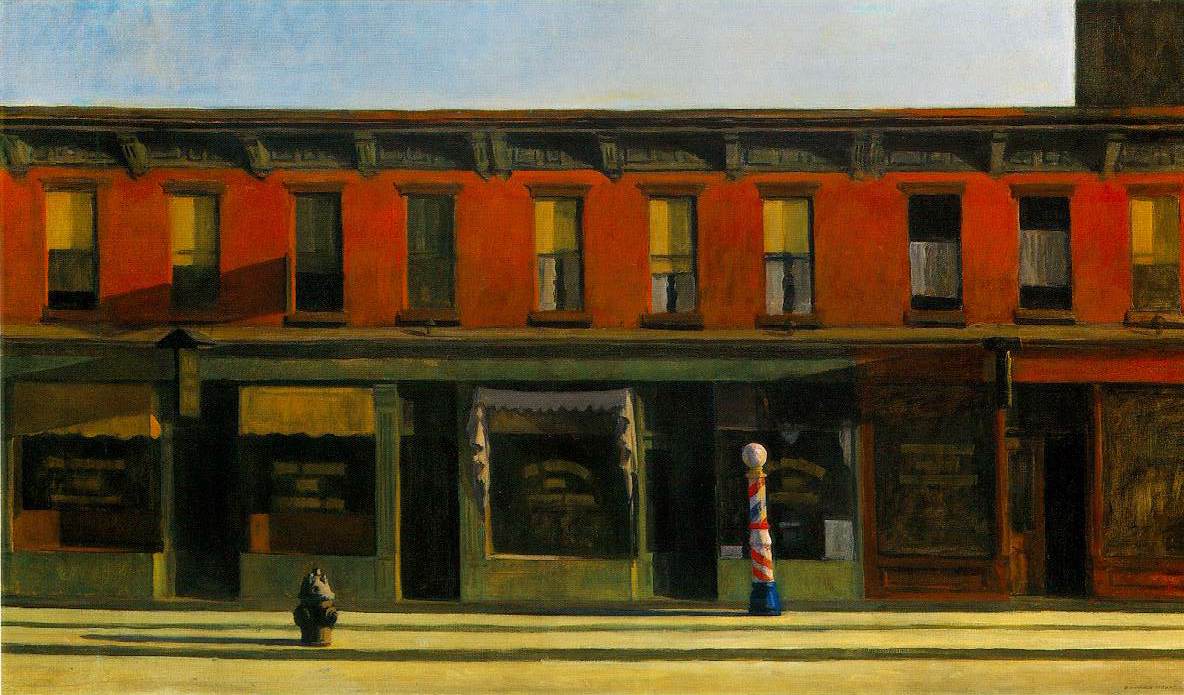I lost it
When my Dad and I are out chasing trains, we generally approach the town of Milmine from the west – from Bement – on a road that parallels the Norfolk Southern railroad. But yesterday, we arrived from the south; which direction provides a more expansive view of the town and, on this particular day, the sight of an earth mover active on the horizon.
“They’re tearing down the house,” I said.
“I think you’re right,” Dad said.
“The” house is (was) a little nondescript structure that I think has been abandoned – but not seriously ramshackle or anything – since I first noticed it and started photographing it a few years back. It is one of the subjects of a book I made called A house and a tree. The building was nothing spectacular, but it was constructed in such a way that its masses and angles seemed to change in unexpected ways as one moved about it. I thought of it as a Cezanne composition, but no painterly contortions were needed to bring out the Cubist aspects of the architecture. I made a bunch of pictures of that house, often a couple or three every time we passed it.
So anyway, we watched the big brontosaurus-head bucket smash way too easy through interior walls, exposing wallpaper patterns only imagined up to now. A Lucinda record was on at the time; she sang: “Are you heavy enough to make me stay? I feel like I might blow away.”
Vic Chesnutt once wrote a song called “Lucinda Williams,” and he had this to say: “I settle down on a hurt as big as Robert Mitchum and listen to Lucinda Williams.”
Tanya Donelly once wrote a song called “World on Fire,” and she had this to say: “I want in on Lucinda’s sweet old world, if it’s there. I swear to god there are days that song’s what gets me out of bed.”
And so, if you didn’t know already: Lu can be a comfort. Especially when the hurt is Mitchum-sized. That song of hers that was on as the house fell and which was already quite well and is now permanently stuck in my heart is called “I Lost It,” and it also has this to say:
Gimme some love to fill me up
Gimme some time, gimme some stuff
Gimme a sign, gimme some kind of reason
Vic Chesnutt was a man continuously looking for some kind of reason. Ultimately, he couldn’t find one sufficient. But before he left this world of his own accord, he wrote a whole lot of really great songs and one of them is called “Wallace Stevens.” It’s not too awful long, so here it is:
I saw a blackbird
Thirteen ways
Then strew a fist many
Mountains away
My evangelism felled
Brutally taken
By breezes that rubbed me
And lifted light raven
I stretched to borrow
Fine antebelleum
To encase all the scrapings
Of us civilised fellow
I wanted to stash them
To secretive cages
With that fabulous blackbird
Of thirteen stages
So: about that fabulous blackbird conjured up by Wallace Stevens.
But: before that, and back to the razing of that house, here’s a strange thing: I also witnessed the destruction of the other topic of my book: a tree that stood on the very edge of my parents’ neighbor’s property. The trunk had a gentle and even sensuous curve to it that presented differently in varying light and season. As with the house, no two images of it could look quite alike. I was smitten, and made pictures accordingly. If the guys who were cutting it down that day were perplexed by my request for a souvenir piece of wood, they nonetheless happily obliged with a way larger chunk than I’d anticipated.
What makes this all so strange to me are not the decreations themselves, but rather my witness to them: I’m in Illinois roughly ten weeks each year, and that’s a fair amount of time and I couldn’t be happier, but to have been present there (or here, as I write) for the demise of both the house and the tree seems oddly unlikely to me. Especially with respect to the house, which I may see just a few times on any visit home.
So whatever cosmic convergences were at play, in the case of both the house and the tree, I was there when the fact ceased to exist. But the thing is is that these were also in a way my facts. And by that I mean: the blackbird – my blackbird – was present. Stevens:
I know, too
That the blackbird is involved
In what I know.
In his poem, the blackbird graces thirteen different situations, always in a different way but also always ultimately in the same way. Because the bird is Stevens’s, it could not be otherwise. The blackbird is the meaning that each of us brings to each and every fact we encounter; it’s as utterly unique as we each are, exactly as unique as what we individually love, hate, fear, desire.
The meaning the blackbird engenders is entirely internally generated, and is one with the fact; it neither adds to nor detracts therefrom.
A man and a woman
Are one.
A man and a woman and a blackbird
Are one.
And yet the blackbird is the unifying presence, through both space and time, of every sensory fact. Indeed, it may act precisely to delimit our vision:
When the blackbird flew out of sight,
It marked the edge
Of one of many circles.
Which got me to thinking with no small amount of jealousy that there are some image-makers for whom the range of the blackbird is capacious. Lee Friedlander, for example. Black-and-white “self portraits,” color pictures of jazz musicians, square photographs made from the driver’s seat of a rental car, insert your favorite example: there’s no mistaking the visual hard-wiring of the author, whatever the ostensible subject matter.
Or consider someone like Andrea Modica or Mark Steinmetz. I consider them often, because their blackbirds seem so powerfully pervasive throughout their work of many years. Both have made landscapes and portraits and hybrids (and add still lives for Modica) in this country and abroad, and yet always there is a unifying force in the pictures; probably not so primarily visual as Friedlander’s but rather more emotional – in my viewing, it’s a constant recognition of the brokenness of life tempered by a very fine attunement to transcendent moments of joy.
When the imaginative ability to create meaning is absent or blocked, those moments of joy are obviously hard to come by.
The river is moving,
The blackbird must be flying.
The converse: No blackbird, no life flow. So that’s what Lucinda Williams lost, at some point in her life, and needed to find again. One must assume she rediscovered it mightily in order to create such a record as Car Wheels on a Gravel Road. But maybe that’s no surprise: in “The Plain Sense of Things,” Stevens writes, “Yet the absence of the imagination had / Itself to be imagined.”
And one can certainly understand the necessity of the blackbird for Vic Chesnutt, whose body could hardly move and whose hands had to be fastened to his guitar, but whose mind flew to places wholly unknown to the rest of us, and brought back songs to attest. I wonder if my favorite stanza in “Thirteen Ways of Looking at a Blackbird” would have been Vic’s as well, the final one, which Stevens himself said was evidence of his despair:
It was evening all afternoon.
It was snowing
And it was going to snow.
The blackbird sat
In the cedar-limbs.
But the apposite stanza for today, with both the house and the tree (which, incidentally and joyously, has been replaced by what appears to be a quite substantial bush but is actually a ring of sturdy saplings sprouted from the stump) gone, is the fifth:
I do not know which to prefer,
The beauty of inflections
Or the beauty of innuendoes,
The blackbird whistling
Or just after.



